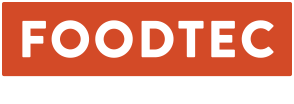Restaurant chains have had a roller coaster of a year in 2020. COVID-19 has not only been a devastating public-health crisis, it has also been the restaurant industry’s greatest challenge to date. The industry has taken a dramatic hit by COVID 19 with many sources projecting that the COVID-19 pandemic will continue to impact the restaurant industry for years to come.
With so much uncertainty, how can a restaurant plan and budget for 2021? Budget season is usually a time to reflect and analyze your business marketing and technology initiatives from the last year and set a new plan in action to achieve greater success. Needless to say, the unforeseen events of the past few months makes budget planning for 2021 complex.
However, during these challenging times many of us have explored or adjusted to new ways of working, learning, communicating and buying things—including dining and eating “out”. Although initially adopted in reaction to the coronavirus, some of these changes are likely to become a permanent part of our lives. With that in mind, there a number of initiatives that restaurants should keep top of mind when planning for 2021 that will put them in a better position to capture value and remain competitive in a post-COVID-19 future.
-
Implement Online Ordering:
If you haven’t gotten on board with online ordering just yet, now is the time to implement a system. And we are not talking via a third-party delivery site. An online ordering presence of your own will be your most profitable, low-cost revenue channel. Circumstances over the past year have forced more and more customers to use digital channels to order food for takeout and delivery. With the onslaught of COVID, online and mobile ordering have seen massive upticks; restaurant takeout orders have experienced double-digit growth and, yes, the third-party delivery services like Grubhub, DoorDash, and Uber Eats have seen major spikes in profits. Believe it or not, restaurants will reopen fully again one day, but it makes sense to keep delivery and takeout options open for customers who may feel uneasy about dining out in the longer term. -
Offer Contactless Ordering and Payments Options:
“No-touch” has been the new behavioral driver during this pandemic. When COVID hit, contactless solutions quickly became the safest ways to operate. Contactless technology addresses health and safety concerns consumers may have and helps deliver an experience that ultimately improves customer comfort.Prior to COVID, such tech was already gaining adoption. For customers, it’s simply a matter of convenience and speed. Not surprisingly, many studies indicate that once life returns to something approximating normal, the benefits that contactless solutions currently offer are going to become permanent. So invest in Apple Pay or QR code menus with confidence. They will continue to be popular even after the mask era.
-
Optimize Off-premises Dining Business:
If you don’t offer curb-side pick-up already, now is the time to consider adding it. In 2018, research by Technomic highlighted that 59% of all food service meals were being consumed off the restaurant premise. So, again it’s no surprise curbside pickup options have been growing in popularity during the pandemic.For all types of restaurants, from quick service to fine dining, curbside pickup allows customers to order, pay and now pick up their food order without leaving their car. It’s convenient, no-touch, safe and hot.
It is true that the percentage of off-premise sales post-COVID-19 won’t be as high as it was during the crisis. But consider this: curbside tech was trending before the pandemic. COVID has cemented this service method into the minds of your consumers. Investing in curbside tech will not go to waste. It is one of the trends that looks to endure indefinitely.
Before the pandemic, restaurants may have been curious about new point-of-sale (POS) systems, online ordering, contactless, curbside pick-up and even delivery. But the incentive to adopt was low. Switching or investing in new operations not only costs money; it costs time, and usually comes with a steep learning curve for employees.
However, the pandemic has accelerated many trends that were already in motion but might have taken longer to fully play out. Many of the Covid-19 tech adoptions in the restaurant sector play into the consumer’s biggest craving of all – convenience. Pandemic aside, customers like having the option of walking into a restaurant, getting their food, and not having to interact with anyone or wait for an employee to get it.
When planning for 2021 and beyond, your top priorities ought to include updating and adjusting operating procedures to address shifts in customer purchasing habits and preferences, and enhancing your delivery capabilities.




